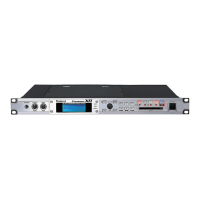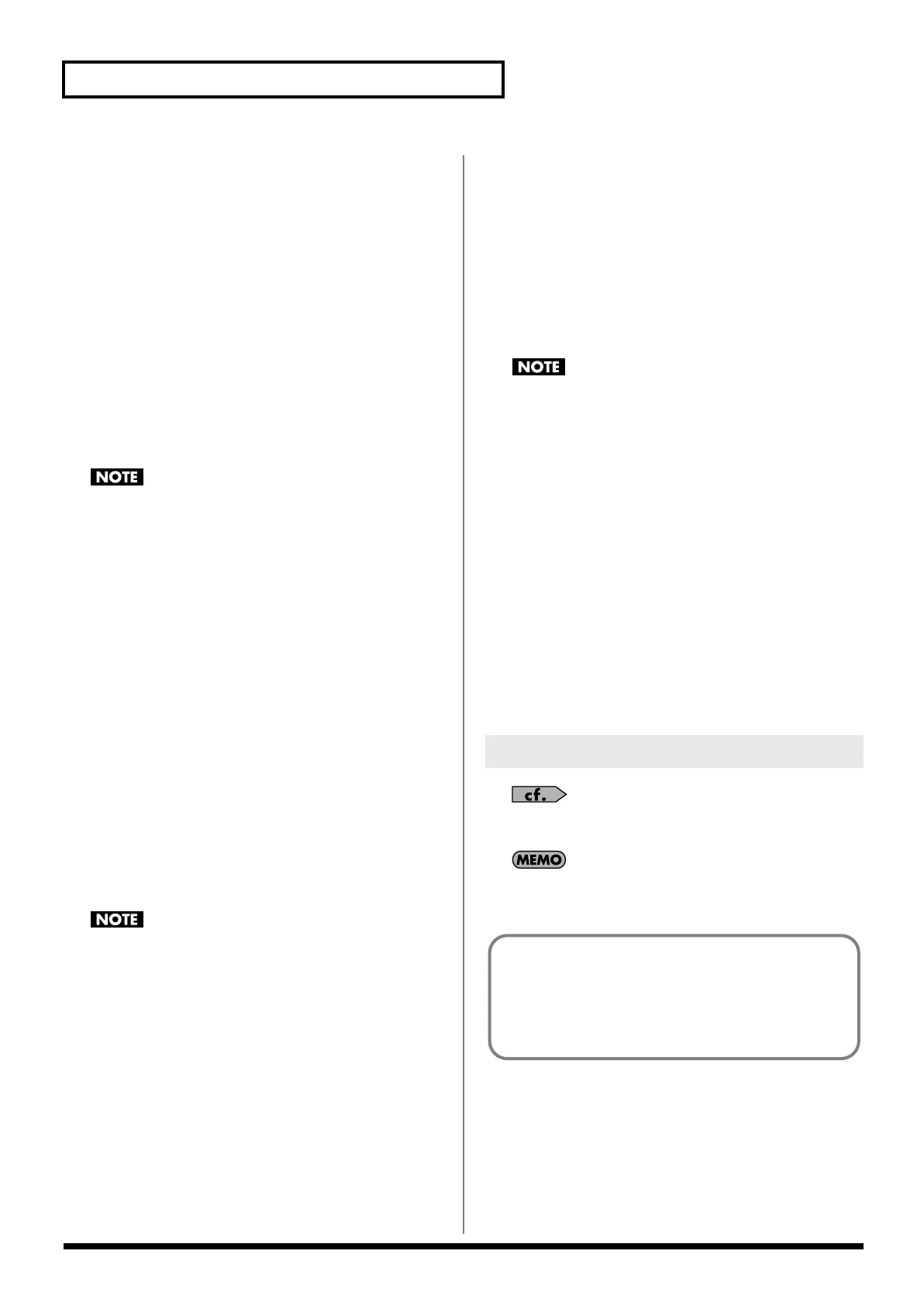74
Creating a Rhythm Set
Mute Group
On an actual acoustic drum set, an open hi-hat and a closed hi-hat
sound can never occur simultaneously. To reproduce the reality of
this situation, you can set up a Mute Group.
The Mute Group function allows you to designate two or more
rhythm tones that are not allowed to sound simultaneously. Up to 31
Mute Groups can be used. rhythm tones that are not belong to any
such group should be set to “OFF.”
Value:
OFF, 1–31
Tone Env Mode (Rhythm Tone Envelope Mode)
When a loop waveform (p. 73) is selected, the sound will normally
continue as long as the key is pressed. If you want the sound to
decay naturally even if the key remains pressed, set this to “NO
SUS.”
Value:
NO-SUS, SUSTTAIN
If the One Shot Mode (p. 74) is ON, it will not sustain even if
this parameter is set to “SUST.”
Tone Pitch Bend Range
(Rhythm Tone Pitch Bend Range)
Specifies the amount of pitch change in semitones (4 octaves) that
will occur when the Pitch Bend Lever is moved. The amount of
change when the lever is tilted is set to the same value for both left
and right sides.
Value:
0–48
Tone Receive Expression
(Rhythm Tone Receive Expression Switch)
For each rhythm tone, specify whether MIDI Expression messages
will be received (ON), or not (OFF).
Value:
OFF, ON
Tone Receive Hold-1
(Rhythm Tone Receive Hold-1 Switch)
For each rhythm tone, specify whether MIDI Hold-1 messages will
be received (ON), or not (OFF).
Value:
OFF, ON
If “NO SUS” is selected for Env Mode parameter (p. 74), this
setting will have no effect.
Tone Receive Pan Mode
(Rhythm Tone Receive Pan Mode)
For each rhythm tone, specify how pan messages will be received.
Value
CONTINUOUS:
Whenever Pan messages are received, the stereo
position of the tone will be changed.
KEY-ON:
The pan of the tone will be changed only when the
next note is played. If a pan message is received
while a note is sounding, the panning will not
change until the next key is pressed.
The channels cannot be set so as not to receive Pan messages.
One Shot Mode
The sound will play back until the end of the waveform (or the end
of the envelope, whichever comes first). The result will be the same
as when the envelope’s Tone Env Mode parameter (p. 74) is set to
NO-SUS. If you have set Wave Group (p. 75) to Sample, the loop
setting will be forced to ONE SHOT.
Value:
OFF, ON
Aft Time Ctrl Sens
(Aftertouch Time Control Sensitivity)
If Wave Group is set to SAMPLE and Wave Tempo Sync (P.75) is
ON, aftertouch will control the amount of time stretching/shrinking
caused by Time Stretch. If Time Stretch is not being applied, nothing
will happen. If the stretch/shrink time will become shorter, and if set
to “-” the time will become longer.
Value:
-63–+63
For details on these settings, refer to
“How to Make Rhythm
Set Settings”
(p. 71).
With rhythm tones, sounds are created by combining up to four
Waves (eight for stereo).
Modifying Waveforms (WG)
Tips on Creating a Rhythm Tone
The Waves for the bass drum, snare, hi-hat, toms, and other
percussion instruments are each assigned to one rhythm tone.
When adding 3D effects to the sound, make the Pan settings for
each rhythm tone individually.
Fantom-XR_r_e.book 74 ページ 2006年4月4日 火曜日 午前10時14分

